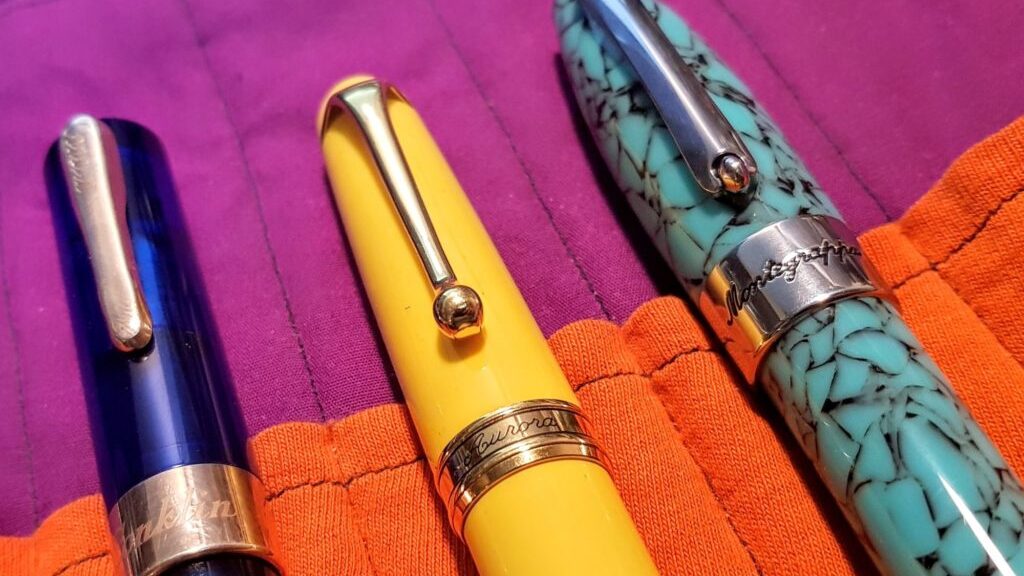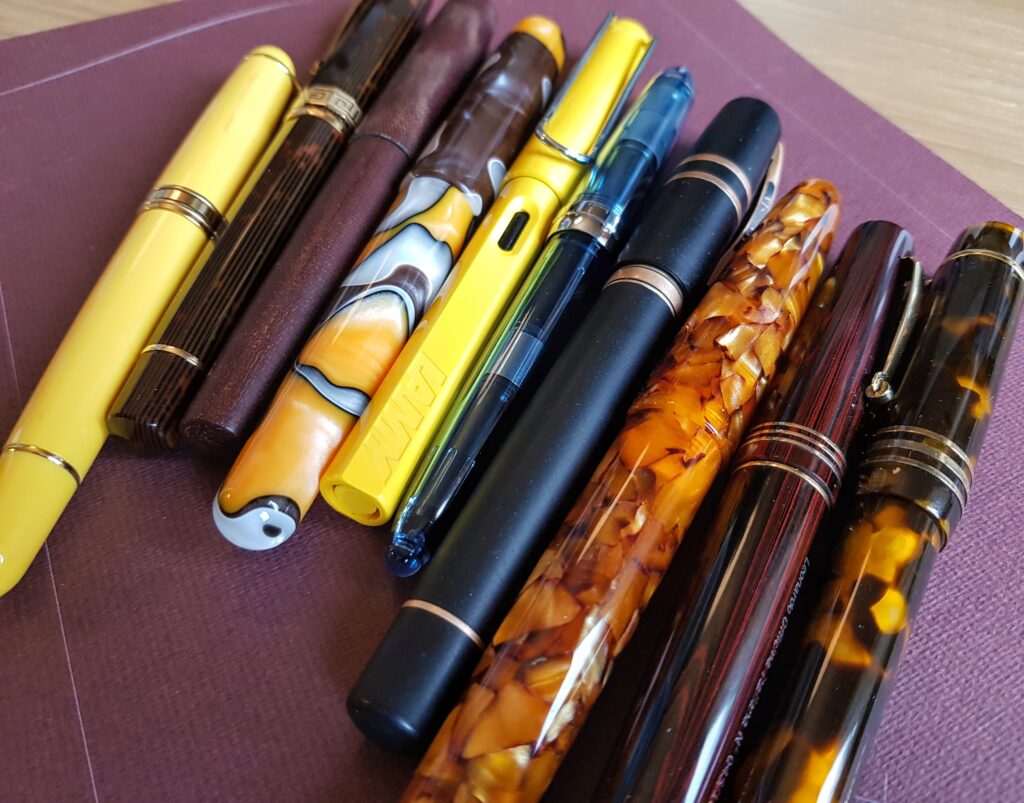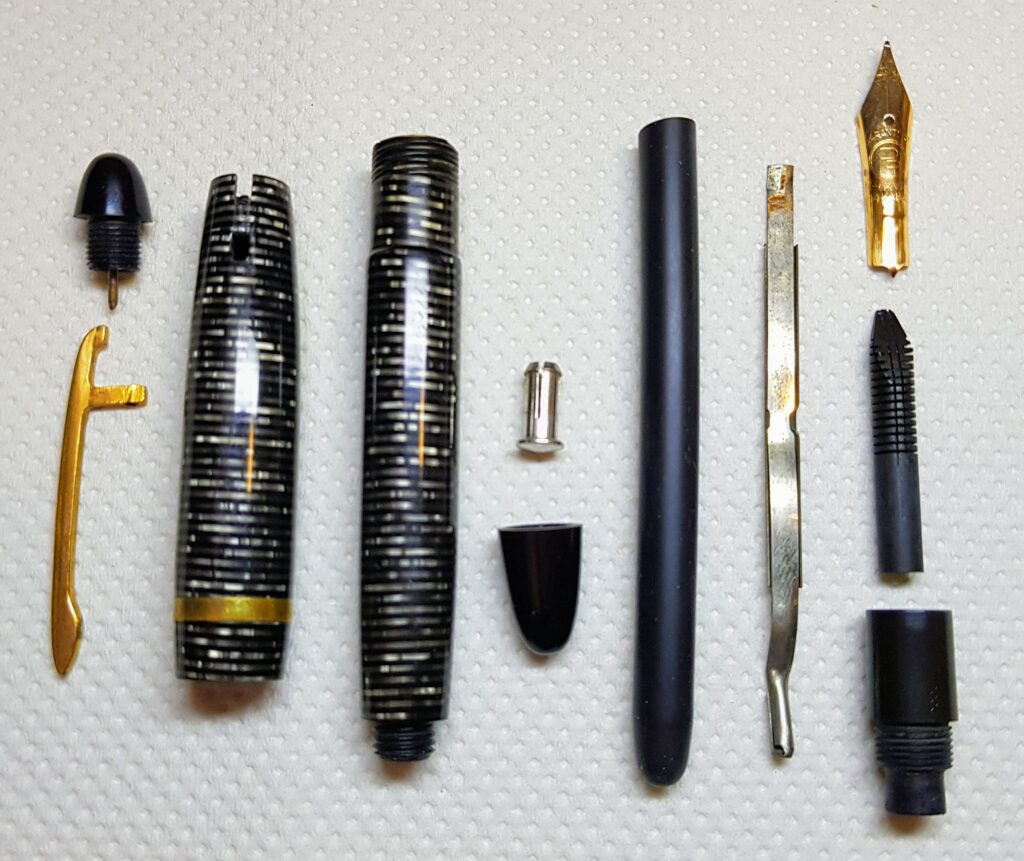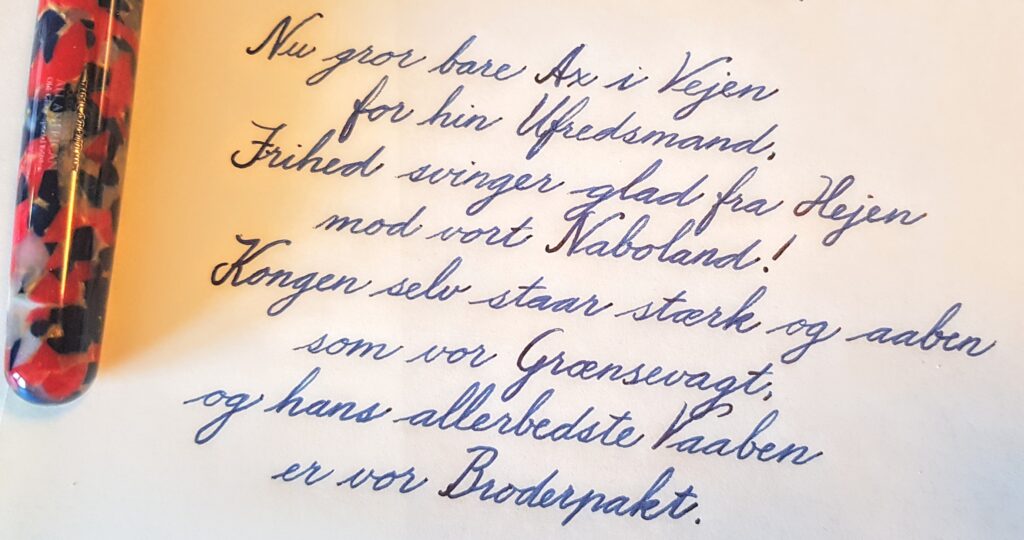
Nibby Sunday – How to have fountain pens as a hobby without emptying your bank account
It’s bothered me a little in recent years how the focus in the pen hobby is very often on constantly acquiring new pens and inks. This can make the hobby unsustainable over time, both for the wallet and for the environment. The eagerness to test new things can quickly lead to losing control over your spending. I have definitely experienced that myself.
Many of the most famous and popular blogs, YouTube channels, and others within the pen community probably also contribute to reinforcing this, through frequent product reviews. #Newpenday has become an established term and hashtag, and you can begin to feel a bit like an outsider if you go a long period without getting any new pens. There could also be a little envy towards those who apparently have the money to keep buying new things. It’s easy to forget that many of the more well-known channels on social media are often sent free products to review.
I feel kind of torn in both directions here. The same YouTubers, bloggers and Instagrammers also help to keep interest up, they keep the community going, and inform us about what’s worth buying and what’s not. I don’t want to just paint it in a negative light. Not to mention the fact that I, as a pen blogger, am part of this practice myself as well. This is something I’ve grown more aware of lately: could my writing affect my readers in a negative way, by creating a pressure to buy the products I write about?
This is one of the reasons why I’ve chosen to not write so many pen reviews here on this blog. I don’t want to contribute to buying pressure for my readers, and to be perfectly honest, I don’t usually find pen reviews all that interesting to read myself. That’s mostly a matter of personal taste and interest, of course. When I wrote pen reviews regularly, I found that I often wrote almost the same thing about each pen. Therefore, in the last couple of years I’ve chosen to write fewer reviews, but instead write about the pens I have a more personal relationship with, and can say something more about than just how they look and how they write.

When I read other pen blogs, I feel that very often there is a heavy focus on product reviews and not much else. Personally, I usually think that the posts that are not built around a review, but that talk about other aspects of the hobby, are much more interesting. It’s a goal for me that this blog should have a different approach to the pen hobby. You can be a pen enthusiast, and consider it a hobby, if you have a few pens that you bought many years ago, and you still love to use, without any particular need to buy more pens. But those stories quickly gets drowned out by everyone who just wants to show off their new acquisitions.
In the times we live in now, many people experience a tighter economy than they did two or three years ago. The first thing that suffers from that is oftentimes our hobbies. Many pen enthusiasts have probably had to come to terms with buying a little less, and instead manage with what they already have.
I have often wondered what exactly makes pens a hobby, other than collecting them (ergo: accumulating more of them). As soon as you pick up the pen and write with it, isn’t it the writing that is the hobby, not the pen itself? At the same time, you could perhaps say that if the pen contributes to making the process of writing more pleasurable than it already was, the pen is by all means a part of it, and therefore a hobby.

The more I think about it, the more aspects of the pen hobby come to the surface, and many of them don’t need to make a huge dent in your wallet. Here are a few tips for those who have pens as a hobby, but don’t want to spend too much money:
Restoration and resale
This requires a small effort and investment in equipment and parts, in addition to the process of learning it. At the same time, it’s neither expensive nor particularly difficult to learn some simple repair techniques. Knowing how to change the ink sac on an old pen goes a long way. With a little knowledge and training, one can buy pens in need of repair cheaply, restore them relatively easily, and sell them on at a profit. It’s an excellent way to finance the hobby, and you learn a lot about how the pens work along the way.
Learn about the history
A very large part of my pen hobby in recent years has consisted of trawling online libraries, newspaper archives etc. for material about Norwegian pen manufacturers. Slowly but surely, I’ve been able to put together the history of the Norwegian pen industry, and it’s been a really interesting and fulfilling part of the hobby.
You can search for sources on the interent, get books on relevant history, familiarize yourself with various patents, the history of specific pen factories, important historical people in the industry etc. There are no limits to how big the hobby can become, or how much time you can spend on it, if you start with this. When you’ve been at it for a while, you eventually end up with quite a lot of knowledge that not many others have. And that’s pretty cool!
Use
How about trying to get to know the pens already in your collection as well as you possibly can? This should really go without saying, but at the same time I suspect that there are many pen enthusiasts out there who are more concerned with collecting than actually using the pens. I’ve definitely had tendencies towards that myself, especially early on in my pen journey. I also have a sneaky suspicion that a lot of pen enthusiasts have relatively large collections, but only actually use a few pens regularly. I would encourage everyone to dig around in their pen drawers once in a while and find pens you haven’t used for a while. Sometimes they can surprise you, in a good way! Try to use the pens as much as possible. Look for every possible opportunity to write something by hand. Try to find out which inks are best suited to each of the pens you have. I’m sure a lot of people also have many ink bottles they’ve barely used. Try to use some of the inks you think you don’t like. Maybe you’ll change your mind about them. Explore your own collection!
Calligraphy
It can be rewarding to learn different forms of writing, so that you have a repertoire of writing styles to use for different needs. This is along the same lines as the previous point, but focusing on handwriting and calligraphy can be interesting. There are lots of resources online, and heaps of books on the market that provide introductions to different letterforms and scripts. The question is rather where to start. I would recommend Spencerian or Palmer, to begin with. Or maybe you’ll want to check out some more modern styles?

Ink
Ink is cheaper than pens. If you find joy in testing different inks, it will be easier on your wallet than if it’s the pens themselves that fascinate you the most. Trying out different inks can be great fun. Small bottles and sample bottles of ink usually don’t cost much, so you can get a lot of different inks relatively cheap. It’s also easy to swap sample bottles with friends and acquaintances, and it can be a fun and fascinating part of the hobby.
Curation
To curate is to think carefully about how a new pen will complement the ones you already have in your collection before you buy it. This was something Anthony on the blog UK Fountain Pens wrote a lot about (I miss his blog, it was one of the best fountain pen blogs out there until he quit). He was a great proponent of curating a relatively small collection of different fountain pens that complemented each other, instead of trying to make your collection as big as possible. It can be useful to think through what different functions you want your pens to have and what roles they should fulfill. The pen you use to write National Novel Writing Month by hand while sitting at your desk at home is not necessarily the same pen you carry in your pocket to do quick scribbles with during the day. The pen that’s best suited for taking notes at school or work may be different to the one you prefer when you write letters. Maybe you want a choice of different widths and types of nibs, maybe you want a urushi pen, an Italian celluloid pen and a wooden pen? Thinking through, assessing and figuring out which combination of pens you want in a relatively small collection can be a great way to nurture the hobby.
One in, one out
Finally, you can also decide that the collection should never exceed a certain number of pens. When you hit that limit, you have to get rid of a pen if you want a new one. In this way, you can sell one or more pens from your collection, and use that to pay – or at least partly pay – for a new pen. This is also a great way to build yourself up to more expensive pens, as you can then sell old pens, and put in a little extra, to get a pen that would be outside your comfort zone money-wise to pay completely out of pocket. Or maybe you can sell three pens to afford the grail pen that you would never otherwise be able to afford?
How do you keep the pen hobby alive?
2 thoughts on “Nibby Sunday – How to have fountain pens as a hobby without emptying your bank account”
It’s strange that you reference UK fountain pens in a post about not needing to constantly spend money on new things in order to enjoy the hobby. Hope he got a grip on his spending habits and is a bit happier now that he has stopped blogging.
Thanks for the comment! I actually wasn’t aware that he was struggling with that… My point was that he always seemed to focus on making deliberate choices in his collection, and a curated, diverse collection, not a hoard. But then again, blogging about fountain pens can be a slippery slope. We’ve seen plenty of examples of that. As a blogger, you WANT to stay on top of everyting, and it’s very easy to feel that you have to get new stuff all the time to show off on your blog.